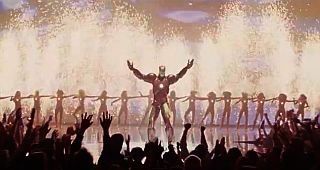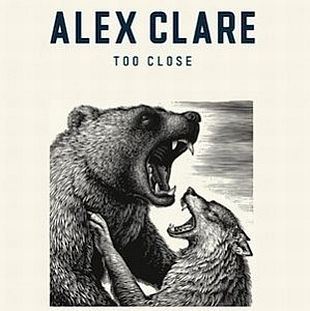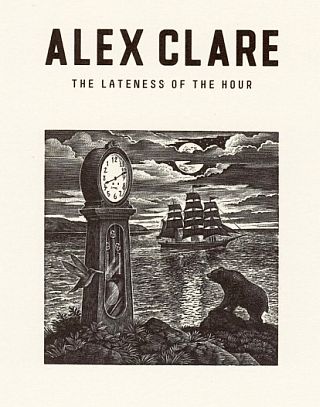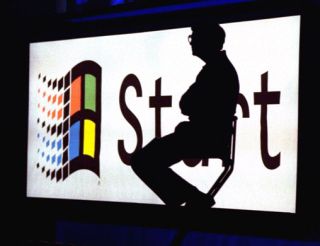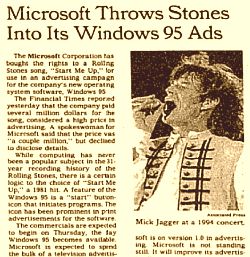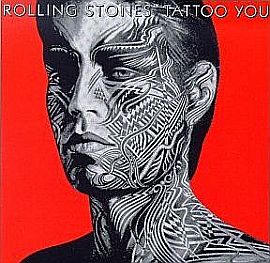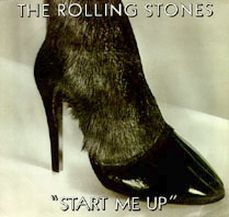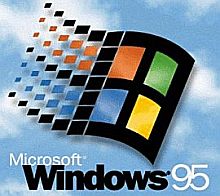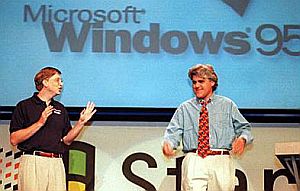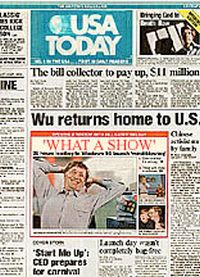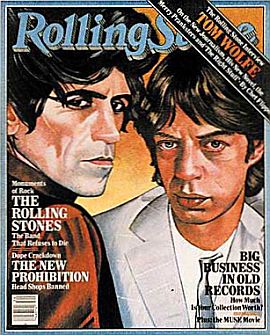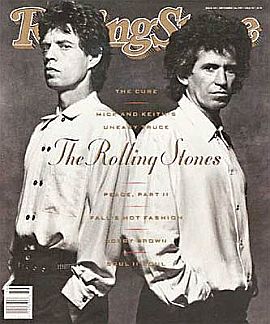 Screen shot from Microsoft's "Welcome To A More Beautiful Web" TV ad for its Explorer 9 web browser, March 2012. |
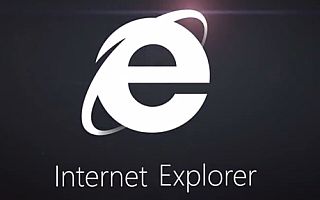 Screen shot from Microsoft's "Welcome To A More Beautiful Web" TV ad for its Explorer 9 web browser, March 2012. |
In March 2012, Microsoft began using a song titled “Too Close” by an unknown British singer-songwriter named Alex Clare to help advertise its Explorer 9 web browser. Microsoft’s ad succeeded in turning heads, providing a “look-at-me” moment courtesy of the song’s powerful sound. But this wasn’t the first time that Microsoft sought to use pop music to help sell its wares.
Music Player
“Too Close”-Alex Clare
[scroll down for lyrics]
Nearly 20 years ago, company founder Bill Gates spent millions to use a well-known Rolling Stones song, “Start Me Up,” as a musical theme to kick off the release of Microsoft’s Windows 95 PC software. But in 2012 when the new Explorer ad was being offered, the stakes were a little bit different.
In 1995 Microsoft was then the top computer software company in the world and Windows 95 was a much anticipated release. In 2012, Microsoft was engaged in a battle for browser market share with tough competition coming from Google’s Chrome and Mozilla’s Firefox.
Google, in fact, had used the Lady Gaga song, “The Edge of Glory,” to promote its Chrome browser in a well-done and upbeat 2011 TV ad starring Lady Gaga that generated a sizable following. However, the music Microsoft chose to run with its Explorer ad in 2012 — being from a relatively unknown artist and not a recognized hit — was something of a gamble.
And perhaps the bigger story here is what the Microsoft ad did for the music and the artist rather than the other way around. In fact, by some accounting, the one-minute Explorer ad – which aired in at least two variations – did more for the artist than it did for the Explorer browser, sending Clare’s song to the top of the pop music charts.

Alex Clare, singer-songwriter.
Still, upon release, Clare’s album struggled for traction and nothing much happened. But nearly a year later, in March 2012, “Too Close” was selected as the soundtrack to Microsoft’s TV ad. In March and April, the ad began running. It aired during prime-time TV broadcasts and also in movie theater spots that ran before feature films such as “The Hunger Games.”
Not long thereafter people began making internet queries asking about “that song with the Explorer ad.” Over the summer, the Explorer ad ran during the Summer Olympics, and into the fall, during the baseball playoffs and early football season. The ad’s exposure sent Clare’s song soaring on music charts, achieving international recognition in the early weeks of the ad’s airing.
On April 15, 2012, one year after its initial release, the single debuted at No. 37 on the U.K. Singles Chart. In the U.S., the revived song debuted around the same time at No. 68 on the Billboard Hot 100. By May 16th, “Too Close” song peaked at No. 4 on the U.K. Singles Chart and its also topped the German charts at No.1. Sales totaled over 100,000 downloads after the first weeks of release. By late September 2012, “Too Close” peaked at No. 8 on Billboard chart, remaining on that chart for more than 26 weeks.“I’d been nowhere to being on the top 10 on the pop charts,” recalled Clare in one interview after his song had become a hit. “And then I was flying into Germany and… I had this really weird experience in Berlin of being told, ‘Your record is the number one record in the country’.”
Music Video. When “Too Close” was first released in March 2011, before the Explorer ad, it had an earlier associated music video on YouTube. That video featured Clare singing his song in a chair intermixed with scenes of a Kendo fight between two heavily-padded athletes in black uniforms. The video takes place in a deserted factory building.
|
“Too Close” You know I’m not one to break promises And it feels like I am just too close to love you You given me more that I can return And it feels like I am just too close to love you And it feels like I am just too close to love you So I’ll be on my way |
Initial viewings of the video, prior to the Explorer ad, found very small numbers. But two months after the Internet Explorer 9 ad began running, pageviews on the You Tube video jumped to more than 3 million, and by late September 2012, to more than 25 million. A music discovery app named Shazam – which was used 150 million times by one count to help identify the song by those making queries – also helped push the growth of “Too Close.”
As for the Explorer ad, it appears that the song choice was the call of Keith Rivers, a Seattle-based film maker who made the decision to use clips from “Too Close” in the ad. Rivers had come across the song after friend and former “American Idol” contestant Blake Lewis introduced him to Clare’s music shortly before Rivers started working on the Explorer ad project. Rivers became captivated by Clare’s sound and believed the song would work well in the ad.
“It was the emotional intensity of Clare’s song coupled with the depth and richness of sound that made film director Keith Rivers feel that ‘Too Close’ was the perfect complement to the visuals and message of the Internet Explorer TV spot…,” according to a Microsoft statement.
One primary focus of the ad was to “make an emotional connection” with viewers. Rivers found Clare’s song to be “filled with uplifting energy and vocals…”
The style of music heard in “Too Close” is called “dubstep,” and in the case of this particular song, also described as “dub-soul fusion.” Dubstep is a genre of electronic dance music that originated in South London, England.
Allmusic has described the overall sound of dubstep as “tightly coiled productions with overwhelming bass lines and reverberant drum patterns, clipped samples, and occasional vocals.”
The earliest dubstep releases date back to 1998, and some of the music has verged on darker instrumental treatments. The genre also uses experimental tracks with dub remixes of instrumental music. Clare has described “Too Close” as “an electronic song” with live elements – live drums and live guitars – “a mix of live music and electronic music.”
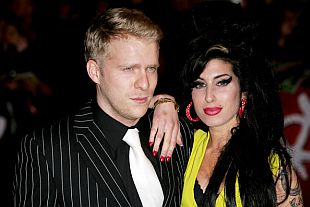
Alex Clare, without beard, in February 2007 with Amy Winehouse at the Brit Awards in London.
Clare had a brief relationship with the late singer Amy Winehouse in 2006. They met while he performed and worked as a chef at a bar she frequented, The Hawley Arms in Camden, North London. They dated for less than a year, and after the romance ended, they remained on good terms. But Clare has stated that his relationship with Winehouse had nothing to do with “Too Close.”
After his debut album The Lateness of the Hour had faltered in 2011, Clare was dropped by his record label and he then started to re-evaluate his career. Clare, an orthodox Jew, then went back to school in Israel and generally took a few months off to consider his options. Then his fortunes changed. “I got an email from someone at Microsoft asking permission to use [the song]. I said yes, not thinking much more of it.” Not long thereafter, Universal Republic signed Clare to a new record deal that also brought his Lateness of the Hour album to U.S. audiences.
In May 2012, an instrumental version of “TooClose” was used in an advertisement for the U.K. version of the television series Revenge. The song also appears in the end credits of the Liam Neeson film, Taken 2, released in October 2012. “Too Close” meanwhile, became a multiplatinum single all over the world, and by October 2012, had sold over 2 million digital downloads in the U.S. alone.
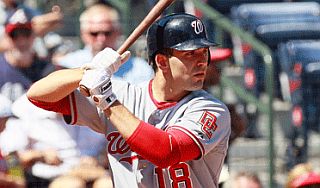
Danny Espinosa of the Washington Nationals baseball team chose “Too Close” for his “entrance music.”
Ad Critique
As for the content of the Explorer ad, there were a few folks out there paying attention – some offering critiques and at least one website posting a humorous video parody. One web article, appearing under the title, “That IE9 Advert…,” at Rob Dudley.co.uk, investigated some of the quotes used in the ad extolling Explorer 9, such as: “IE9 is fast, lean and modern” –Wired magazine; “IE9 is amazingly fast”–New York Times; “IE9 Smoked the competition”–The Next Web; and others. The reviewer found a few of those statements to be stretches or taken out of context.
One reader of the Dudley review, posting under the name “Yup,” offered the following:
…I find this commercial so annoying I had to look it up on the web. I think mostly it’s due to nothing being shown in the commercial having anything to do with browsers? I mean Marvel? The Avengers? Okay so there’s Vimeo. But when did Vimeo become the litmus test for having an awesome browser? It’s not the Crysis of websites, for goodness sake. Then there’s the background lyrics “I think that I am too close to love you / I can’t lie no more / Got to be true to myself” implying what? That all the years IE was considered the worst browser because of the security and stability issues was just hubris? We strayed from the best of IE for Opera, Firefox, and Chrome because of their trendiness?
I don’t know — I’ve used every one of these browsers and Opera is consistently faster and more stable for my needs. It works no matter whether I’m on my beefy desktop or my 7 year old laptop that struggles along on 1 gig ram. That said I will always use Firefox when I can because of the add-ons. I am looking forward to trying IE9 because I’ve heard they’ve really made some improvements, but I don’t appreciate bullshit marketing.
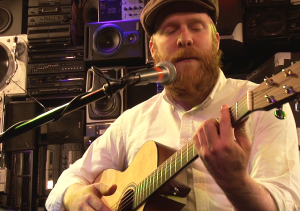
Alex Clare performing with guitar. Photo, Jay Tilles.
Still, by early November 2012, some internet analysts were reporting that Microsoft’s Explorer browser was gaining market share from Google’s Chrome and Mozilla’s Firefox, with at least part of the reason being the 2012 advertising campaign that used the “Too Close” music. Alex Clare, in any case, was happy that Microsoft chose his song to run with the ad – probably the one clear winner in the whole enterprise.
Readers of this story may also find other related stories at this website of interest, including, for example: “Google & Gaga, 2011” (profile of Google’s Chrome browser ad campaign using Lady Gaga, Dan Savage & others); “The iPod Silhouettes, 2000-2011” (Apple’s very successful iPod ad campaign using silhouette dancers); “Start Me Up, 1995” ( Microsoft Windows 95 ad campaign using Rolling Stones music); and “Big Chill Marketing, 1980s-1990s” (how the soundtrack from The Big Chill film changed advertising). Other story choices can be found at the Annals of Music or Madison Avenue category pages. Thanks for visiting — and if you like what you see here, please consider supporting this website with a donation. Thank you. – Jack Doyle
|
Please Support Thank You |
____________________________________
Date Posted: 7 November 2012
Last Update: 11 February 2019
Comments to: jdoyle@pophistorydig.com
Article Citation:
Jack Doyle, “Microsoft & Too Close: 2012,”
PopHistoryDig.com, November 7, 2012.
____________________________________
Sources, Links & Additional Information
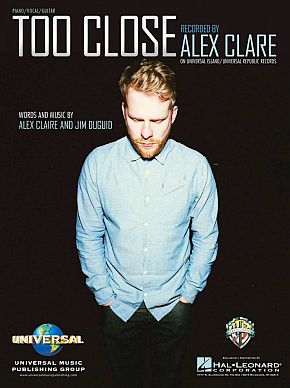 Cover art for sheet music for Alex Clare song, "Too Close." |
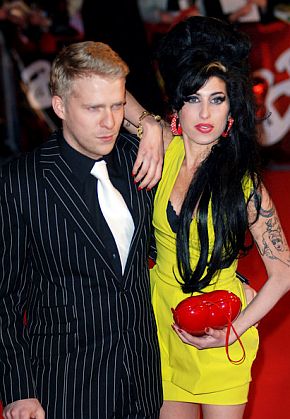 Another photo of Alex Clare, without beard, in February 2007 escorting Amy Winehouse at the Brit Awards in London, the British equivalent of the Grammy Awards. Winehouse won Best British Female Artist that year. |
“A More Beautiful Web Is… Internet Explorer TV Commercial,” YouTube.com, March 5, 2012 by internetexplorer.
“Welcome to a More Beautiful Web – 60 Second Internet Explorer Commercial,” YouTube.com, Other version of ad (with Avengers clip), published on July 8, 2012 by internetexplorer.
Andrew Hampp, “Alex Clare Talks Microsoft Ad, Amy Winehouse & Career Re-Start,” Billbaord.com, April 14, 2012.
“The Web Comes to Life With New Internet Explorer Ad Featuring Singer Alex Clare,” Microsoft.com, March 05, 2012.
Alex Clare, Wikipedia.org.
“Alex Clare Sails Into Top 100 Electronic After MS IE 9 Commercial,” MusicMetric. com, May 30, 2012.
Maeve McDermott, “Meet Alex Clare, the Voice Behind ‘Too Close’,” USA Today, July 15,2012.
“Alex Clare Reflects On His Rocky Ride To Success,” CBSLocal.com, July 17, 2012
Bill Lamb, “Top 10 Hot Pop Songs,” About.com , July 31, 2012 (#4).
Kia Makarechi, “Alex Clare & ‘Too Close’: Singer Talks New Fame, Working With Diplo & Dating Amy Winehouse,” HuffingtonPost. com, July 24,2012.
“That IE9 Advert…,” RobDudley.co.uk, August 15, 2012.
Tom Lanham, “Alex Clare Happy with Commercial Success,” SFExaminer.com, August 22, 2012.
Maeve McDermott, “Internet Explorer Ad Gets a Hit for Alex Clare’s Song “Too Close,” Chicago Sun-Times, August 30, 2012
“Discover Alex Clare: The Man Behind That Dubstep Internet Explorer Song,” JustDoHits. com, September 29, 2012.
Steven J. Vaughan-Nichols, “IE Gains in Latest Browser War Results,” ZDNet.com, November 1, 2012.
Chris Matyszczyk, “Microsoft’s IE9 Suffers Vicious Parody Treatment – You’ve Seen That Rather Dynamic Internet Explorer 9 Ad, Haven’t You? The One That’s Pulsating and Powerful? Well, Here’s a Slightly Different Take,” CNet.com, October 6, 2012.
“Internet Explorer 9 Commercial (The Honest Version),” YouTube.com, October 4, 2012, by
wwideinterweb (parody of Explorer TV ad).
“Too Close (Alex Clare song),” Wikipedia.org.
__________________
